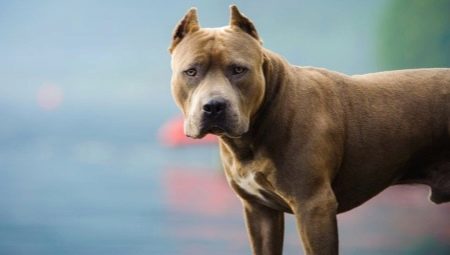All modern dog breeds can be divided into several categories. Some of them are intended exclusively for hunting activities, others show themselves excellently in the service of law enforcement agencies, and some are even kept for decorative purposes. In the same article, you will learn all the information about fighting dogs: features, varieties, pluses and minuses of these breeds.
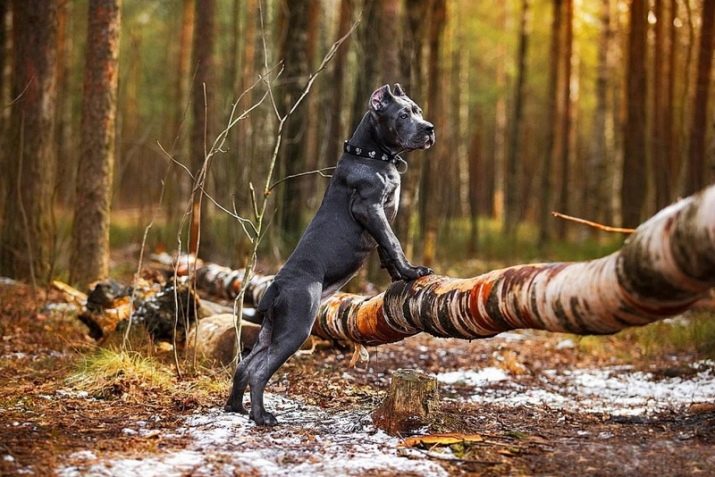
Appearance story
The history of almost all fighting dogs began in the first half of the 18th century. It was at that time that fighting pits became fashionable in Britain. Initially, it was people who fought in these pits, however, over time, bloody shows began to appear more often with the participation of wild animals and specially bred dogs.
The first representatives of fighting breeds became individuals of terriers and bulldogs. Separately, these dogs possessed such unique qualities as speed, dexterity, strength and power, which allowed them to cope with wolves, bears and even bulls without any particular problems. These cruel spectacles gained a huge number of spectators, which led to the beginning of attempts to breed fighting dog breeds.
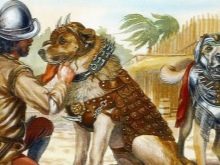
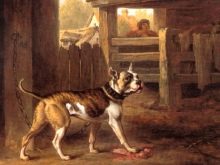
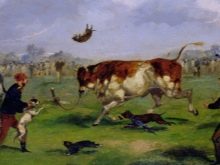
In the course of selection surveys, the strength and ferocity of the bulldogs and the speed, maneuverability and intelligence of terriers were used as the basis for the creation.
The key result was the creation of several separate dog breeds, ideally suited to fight the enemy, which far exceeds them in size and strength.New dogs, in spite of the strengthened skeleton, as well as massive and powerful jaws, had an incredibly quick reaction and sharp mind. This allowed them to predict the actions of the opponent in critical situations. The main feature of these pets was the ability to independently make informed decisions, not based on the commands of their master.
Initially, dogs, despite their strength, always tried to follow the owner’s instructions as accurately as possible, which led to injuries and deaths in fierce and quick battles. Over time, fights began to be held exclusively between dogs, however, the fashion for this did not exist for too long. In the second half of the 19th century, activist movements against animal violence began throughout Europe, which led to an almost complete ban on dog fights.
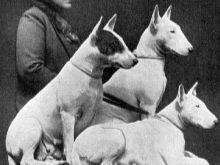
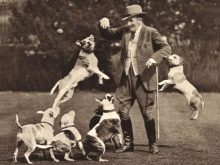

After this turning point, the fate of the fighting dogs completely changed: most of them remained in the UK, where they began to be modified to meet the modern needs of the public. These individuals became wonderful watchmen, guards and defenders, however, they had a much lighter skeleton and less developed muscles than their ancestors. At the end of the XVIII century, the colonization of America was actively taking place. European immigrants imported into America not only their traditions and ways, but also their pets, among whom were representatives of fighting breeds.
Since in America at that time fighting pits were not yet banned, unlike England, they gained simply frenzied popularity. This was a kind of impetus that led to the creation of several more varieties of fighting dog breeds, but already in America. Over time, a ban on dog fighting was also introduced in the United States.

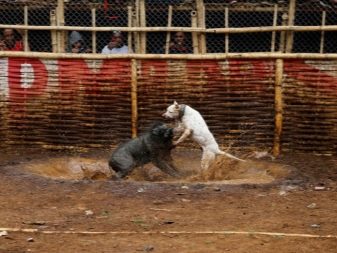
All fighting individuals of dogs began to be used either in underground fighting clubs or served in law enforcement agencies (for example, the police).
Main characteristics
Each breed of fighting dogs has a number of individual external characteristics, which became the reason for creating separate breed standards. But since these dogs were raised exclusively for fighting purposes, they also have certain common characteristics, which will be described below.
- Musculature Most dogs of the fighting breed have incredibly developed muscles throughout the body. The most developed muscles are located on the back, limbs, shoulder blades and pelvis. It should be said that the modern appearance of most fighting dogs has been significantly adjusted after a decrease in demand for fighting pits. This means that even 2 centuries ago these dogs were larger and stronger. The entire musculature of these animals is remarkably delineated due to the thin coat of wool (in most of the breeds).
- Type of wool. Most officially recognized fighting dogs are smooth and short-haired. The undercoat is also missing. This feature of appearance made these dogs completely unsuitable for guard activities in the street.
- The shape of the skull and muzzle. They like to determine the fighting dogs by the special shape of the head structure: it is incredibly massive, wide and represents the shape of a blunt wedge when viewed from the front of the pet.
- Jaws. A feature of almost all fighting dogs is a powerful muscular jaw with pronounced bruising.
- Housing. Almost all fighting breeds have a wide and muscular chest (not very deep).
- Limbs. The calling card of the fighting breeds is the widely spaced fore and hind limbs. In a state of tension, excitement and interest, the pet’s body leans forward slightly, which creates the impression that he is ready to break the leash at any moment.
- Life span. Fighting breeds bring together not only external qualities, but also almost the same average life expectancy. Representatives of these breeds live on average from 10 to 14 years in ideal conditions. This is a very respectable period in relation to other large dog breeds.
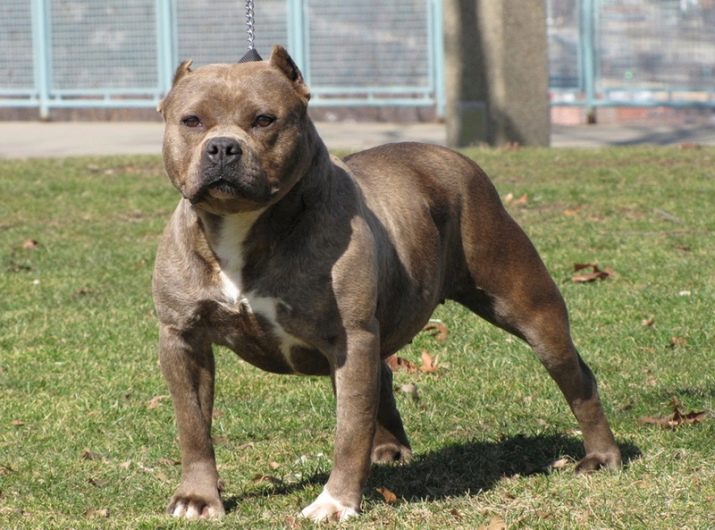
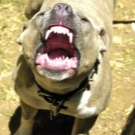

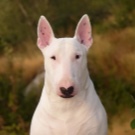
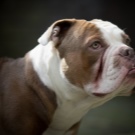
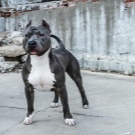
Advantages and disadvantages
Unfortunately, these dogs today have an unpleasant stereotype of dangerous and evil predators that are incapable of self-control and defy training. However, this opinion does not exist due to the bloodthirsty nature of fighting dogs, but because of the dishonesty and inexperience of their owners. Experienced breeders recognize some of the disadvantages of these breeds, however, according to modern dog handlers, there are also many advantages in their content.
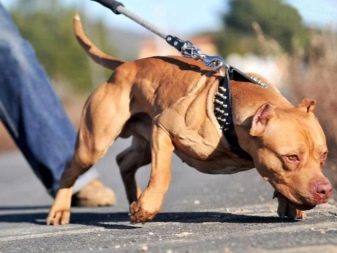
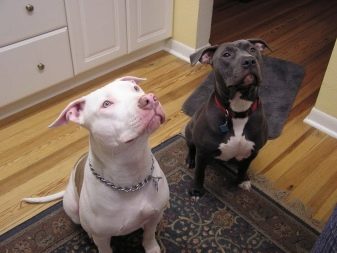
The benefits are as follows.
- All fighting dog breeds - born defenders and guards. If you manage to gain the trust of these pets and establish your authority - be sure they will be faithful to you for the rest of their lives. For the sake of their owners, some of the varieties of fighting dogs are even willing to sacrifice themselves. With them, you can safely walk around the evening city and not be afraid that you will be attacked or robbed - after all, no one in their right mind would dare to attack the same bulldog or mastiff.
- Service potential. In modern realities, the fighting power of these dogs has been learned to use in many professions. These dogs have a natural talent when it comes to guarding or catching criminals. Today, these dogs can be found in law enforcement agencies in many countries.
- Intelligence. Despite the fact that the primary exterior of most fighting dogs has undergone many changes, they remain incredibly smart and independent. A keen mind allows them to instantly read people's emotions, predict their actions and unravel motives. Developed intelligence helps these pets to be self-sufficient - they can be at home for a long time and not miss their master. In addition, fighting breeds perfectly feel the current state of their master and will not bother him in a difficult situation.
- Good health. The difficult and bloody past tempered all varieties of fighting breeds.
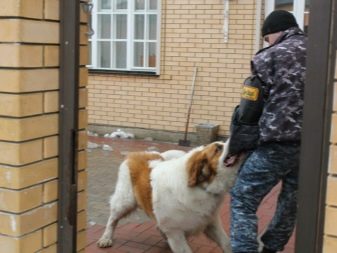
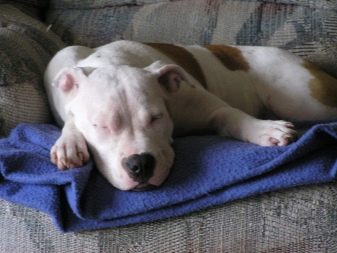
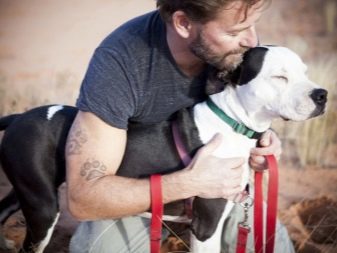
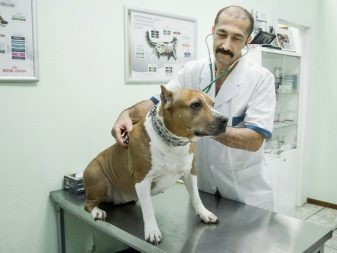
Breeding studies, strict selection and harsh breeding conditions have made most of these dogs practically immune to infections and diseases of the skeletal system.
Disadvantages are also available.
- Parenting. For a full and healthy training and training of these dogs, you need not only an experienced, but also a strong person who will be able to suppress any whims and soberly respond to disobedience. Many of the representatives of the fighting breeds are smart enough to evaluate their strength and power. This leads to the fact that these dogs feel their impunity and will not obey the equal, from their point of view.
- Children and parenting. Few dare to have adult fighting dogs in families with small children. And here the whole point is not even in aggression, but in the jealousy that these pets experience for anyone who “steals” their owner’s attention. These pets should not be given to children for upbringing - the latter will be too affectionate and kind towards the dog and may simply not notice when an ordinary game or fun training turns into a real fight.
- Stereotypes. As already mentioned, not all passers-by on the street are able to adequately perceive fighting dogs. Often the most difficult part in the maintenance of these pets is the biased attitude of others. During walks, many will squint at your formidable pet, hide children and move to the other side of the street at his sight. Most owners of these dogs eventually get used to it and try not to appear in public places. For others, such increased negative attention can put enormous pressure.
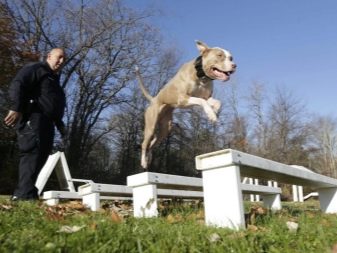
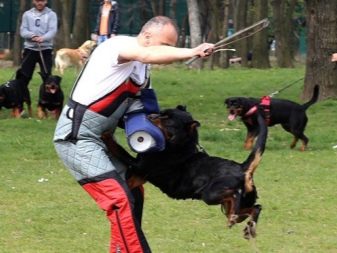

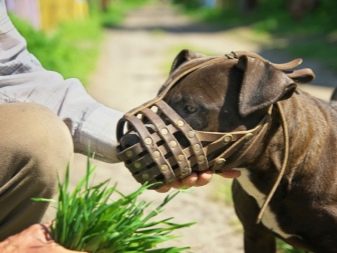
Popular breeds
Among all fighting dog breeds, some of the most famous varieties can be especially noted. Below will be presented the top 10 names and descriptions of the most popular fighting dogs in the world.
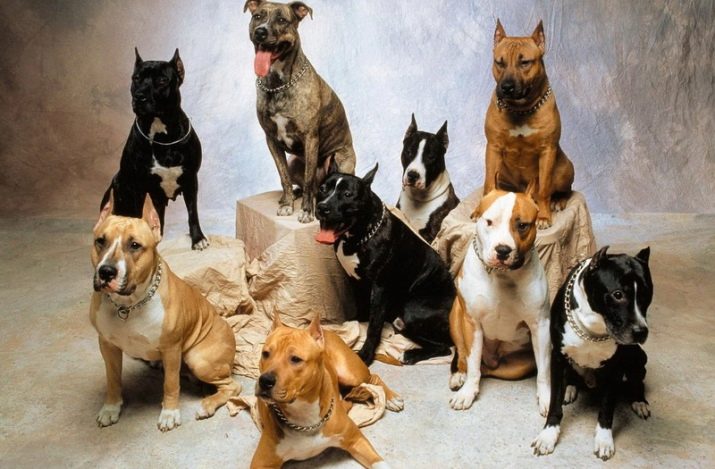
American Staffordshire Terrier (or Amstaff)
One of the most recognizable breeds among the rest. The first individuals were created on the territory of America by crossing English bulldogs and terriers. Representatives of amstaffs were used exclusively in dog fighting pits, a little later, with the introduction of a ban on fighting pits in America, these animals began to be used in private life. Often, these pets became wonderful watchmen, helpers in breeding cattle or ordinary companions.
This breed differs from other fighting dogs in extreme fearlessness in battle, selflessness towards the owner and self-sufficiency. The breed received its name and official recognition only in 1972, when it became necessary to separate the truly English breed and the variety created in America.
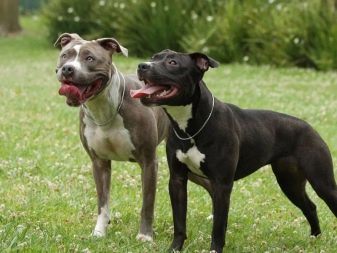
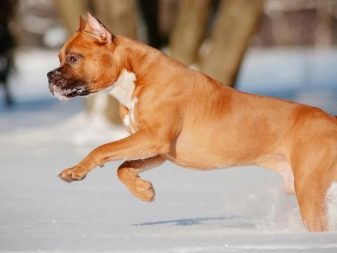
American Pit Bull Terrier
Considered the most bloodthirsty breed of all fighting dogs. It was first bred in America by crossing the Staffordshire Terrier and the Bulldog. Like most fighting dogs, pit bulls were bred exclusively for fighting pits. For years all the qualities necessary for an ideal fighting dog have been nurtured in them: fearlessness, courage, low sensitivity, the ability to analyze the situation and look for the opponent’s weaknesses.
Unfortunately, all these qualities are rooted in the genetic material of pit bulls. Today they are considered the most dangerous and one of the most powerful fighting dogs - in many sources on the Internet you can find a video with evidence of what these dogs are capable of in a fit of rage.

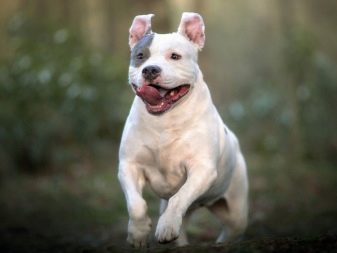
Over time, in some countries, a complete ban on the breeding and maintenance of American pit bull terriers was introduced, however, in others they are still actively used in official activities to this day.
American bulldog
The history of these pets is not much different from the history of the origin of other breeds created in America. However, in this case, the variety is virtually unchanged by breeding an English bulldog. These dogs were also used in fighting pits, however, time was not so cruel to them as to American pit bull terriers. Today these dogs are considered wonderful watchmen, they get along well with children and feel great in large families.
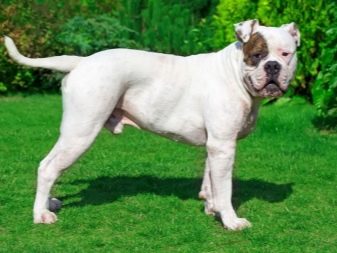
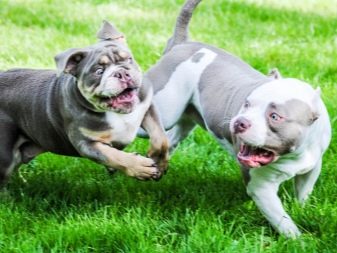
Like all fighting dogs, American Bulldogs are wary of other pets. In the apartment in this respect, dogs are prone to complete domination.
Boerboel
It is believed that the first individuals of these dogs were bred in Europe by crossing with Molossians and pickling dogs. A little later, representatives of these dogs were introduced to South Africa, where the breed underwent significant changes through crosses with local breeds.
On the territory of South Africa and in Europe, these dogs not only participated in dog battles, but were also actively used in farming, hunting and security activities. For these dogs, despite their remarkable service qualities, the fame of bloodthirsty predators was also entrenched.


A huge number of cases of attacks by representatives of Boerboels on passers-by and children are known.
Bull terrier
This breed of dogs was first bred in the middle of the XIX century by English breeding breeders. The ancestors of the breed were individuals of the English Terrier, English Bulldog, and later the Dalmatian. Representatives of this breed differ from the rest in long the muzzle is egg-shaped, as well as the complete absence of a stop. White bull terriers are most common in color, however, individuals of tiger, red, gray and white with black spots are also found. At the moment, most of these dogs are bred for decorative purposes only.
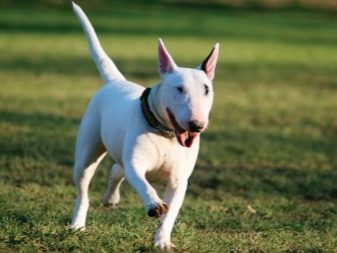
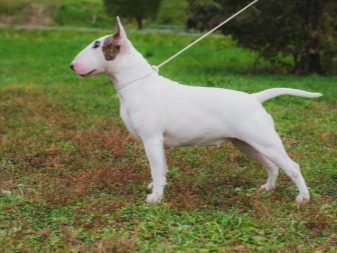
With each year of its existence, these dogs are becoming less aggressive in relation to other pets, loyal to the owner and very caring and attached to children with proper upbringing.
Tosa Inu (or Japanese Mastiff)
The only representative of the Molossoid dog group in Japan. The first individuals of this breed of dogs were bred only at the end of the XIX century, the homeland was the province of Tosa, which is located on one of the Japanese islands. The initial task was to create a dog ideally suited for dog fights. But in the future dogs began to be used in security and official activities.
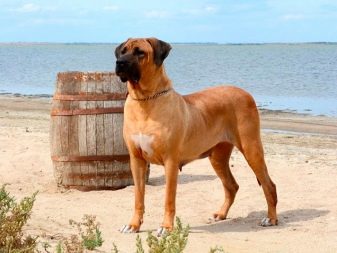
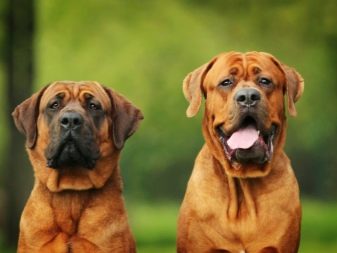
The ancestors of these dogs in Japan are considered to be representatives of the Koti Inu, Pit Bull and Staffordshire breeds, which were also bred for dog fights and for hunting.
Over time, Japan opened its borders to visiting foreigners, which led to the appearance of other types of dogs in Japanese dog pits. Unfortunately for the Japanese, Tosa Inu specimens began to lose to foreign breeds almost immediately in all respects. This led to attempts to create a stronger, more resilient and maneuverable breed. The result of the experiments was the Tosa Inu, which they see today.
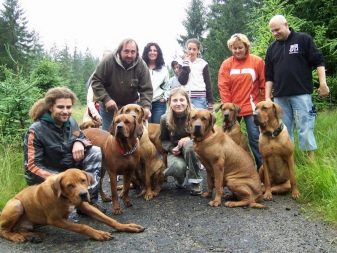
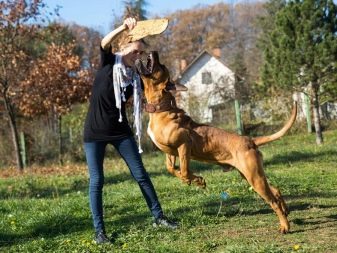
Brindis fighting
This breed is a rare, but striking representative of all fighting dogs. It is believed that the first representatives of this breed were bred in Italy in the middle of the XIX century. The initiators of the breed were individuals of the pit bull, Rottweiler, as well as some other varieties. Representatives of this breed are known throughout the world for their unusually aggressive and uncontrolled behavior. It is believed that these pets were actively used by the Italian mafia to painfully kill their victims.
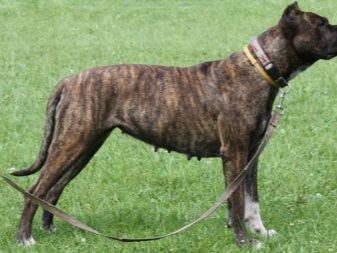
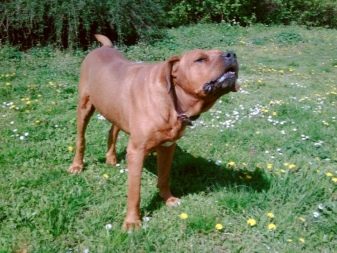
Unfortunately, this breed is not recognized by any modern cynological organization, and therefore there is no clear standard and description of the exterior.
Caucasian Shepherd Dog
Among the large representatives of fighting dogs, the Caucasian shepherd occupies a prominent place. She is one of the oldest representatives of the fighting breeds: it is believed that Tibetan dogs and mastiffs became her direct ancestor. Unlike other dogs With fighting qualities, Caucasian Shepherds were originally used as watchmen, guards and defenders.
Their rather long and fluffy hair allowed for a long time to be in harsh climatic conditions. Representatives of these pets got their name from the place of creation - the Caucasus, and the first breed standards were spelled out in the 30s of the XX century.
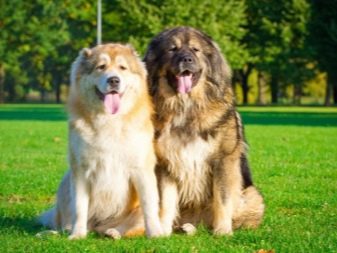
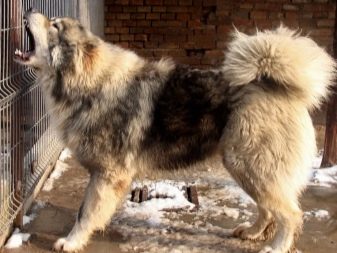
American bandog
These dogs are also a striking representative of the exterior of any fighting variety. These dogs gained their remarkable fighting qualities by crossing pit bull terriers and Neapolitan mastiffs. Despite its aggressive appearance, these dogs are quite flexible in nature, prone to training and very loyal to their owners.
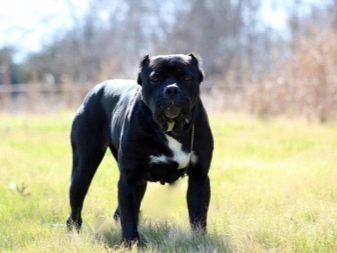
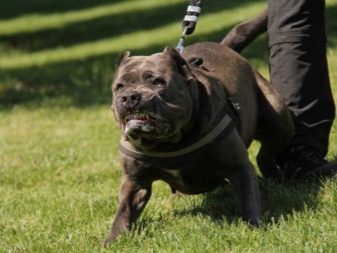
English mastiff
Famous breed in modern England. These dogs are considered one of the oldest in England and were bred by crossing Tibetan dogs, bulldogs and terriers. Since the XVIII century, these dogs took an active part in watchdog activities, helped in hostilities, and a little later they began to participate in fighting pits.

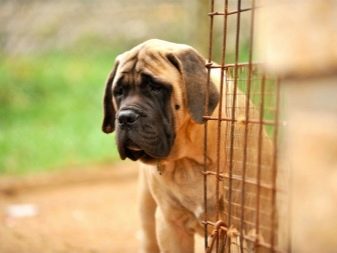
With the departure of the fashion for dog fighting, the exterior of these dogs underwent many changes: they became not so large, squat, the number of muscles decreased.
Parenting and training
All efforts to train fighting dogs should be aimed at the formation and retention of their own authority.These dogs need a solid hand, which will not allow indulgence or indulgence. Only in this case, these dogs are brought up obedient and calm. Below you can find a list of recommendations that you need to adhere to during the training of such pets.
- The first steps. Begin classes with your pet from the first day it appears in your apartment. Remember that the younger the puppy falls into your hands, the more likely you are to form the correct character and lay a competent base for training. First, classes should begin with short and very easy commands, which will indicate a simple one-time action. Vivid examples are the commands: “sit”, “up”, “fu”, “voice”. Do not forget that remembering a single team may sometimes require more than a dozen repetitions, especially when it comes to stubborn but intelligent dogs like fighting dogs.
- Socialization. Unfortunately, fights in dogs of fighting breeds are laid at the genetic level - all of them are prone from birth to a surge of energy through physical struggle with their own kind. An ideal option in raising these dogs would be one where 2 or 3 puppies grow together. Through games, general entertainment and sharing the game, puppies will learn the world together and understand how to behave with other pets. Remember, it is better if your pets learn what a fight is through playing with each other than they will taste it already in adulthood.
- Aggression. Almost all representatives of fighting breeds are very vindictive. They may not respond to aggression at the moment, however, the next day or in the coming weeks they will show their displeasure by some act. Try not to allow such situations and not to anger your dog: avoid beating, do not hit the pet with a leash, do not raise your voice to a scream and do not intimidate your pet. It is possible to overcome the stubborn character of small puppies of fighting dogs only through iron patience.
- Systematic. Classes with the pet should be held regularly at about the same time, do not allow for large training gaps so that your pet does not forget all the material passed. At a very young age, give your workouts at least half an hour of daily time. By the year, the time spent on training should double by up to an hour or more.
- Trainer. Only one trainer should participate in the training of fighting dogs. If there are two or more trainers (in whose roles children usually participate in ordinary families), such pets always choose obedience in favor of the most loyal and kind trainer, in their opinion.
- We complicate the task. After you are convinced that your pet is able to carry out more or less simple commands and may well repeat them, proceed with the study of more complex exercises. As a rule, teams that require a long and consistent performance from a pet play the role of complicated exercises. A striking example of such teams are: “near”, “to me”, “aport”, “place”, “front”. To remember them, the dog will need much more time than to remember simple commands.
- Promotions. Do not forget about the banal reward of your pet after the successful completion of the next order. For example, for puppies, a delicious treat in the form of encouragement is very motivating for the rest of the teams. Special cerebral bones from the pet store can serve as goodies. Some breeders prefer to give the dog a treat after each walk, during which the pet behaved calmly, diligently and obediently.
- Authority. To set the necessary authority in front of the dog, you should adhere to certain rules. When walking, always try to keep your pet nearby and do not allow to move away over long distances. When entering the room, it is you who must first enter, and then the pet.During the meal, you first have breakfast, after that the pet. To put it simply, a fighting dog should understand that everything that happens depends on the owner and happens only according to his will.
- Severity. Remember, if you once allowed your pet something a priori forbidden, you will no longer wean him not to do this the next time. And here it will be not a dog’s bad behavior, but a misunderstanding of why this should not be done, although at one time it was possible.
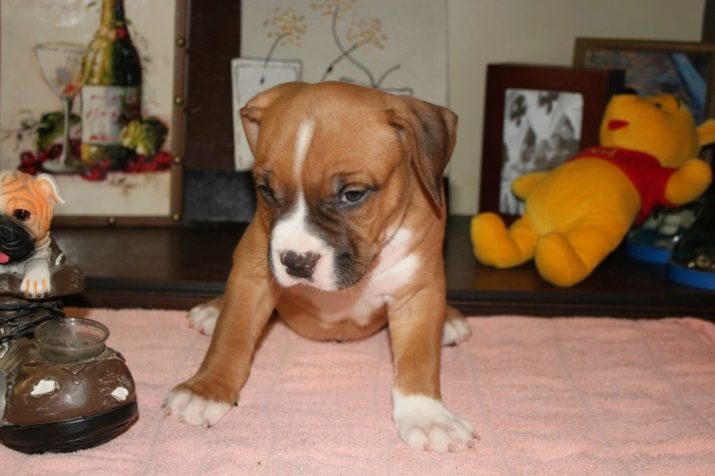
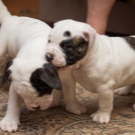
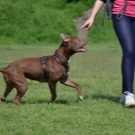
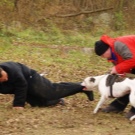
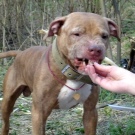
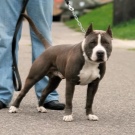
Walking rules
Walking on the street is an indispensable item in the content of any dog breed. It is during the walk that your pet should fully show its potential in training and spend energy for proper sleep and assimilation of food. Below you will find the basic rules for fighting dog walking.
- Loads. Inexperienced breeders attribute the aggressiveness and activity of fighting dogs to their restless and bloodthirsty nature, and only experienced owners know that qualities such as moodiness and aggression are manifested when there is a lack of a niche for a splash of energy. All dogs, and especially dogs of fighting breeds, need regular training with a large number of trainers, runs and teams. Ideally, adult dogs of this species should be given at least 1 hour per day for a full and tiring training.
- Protection. A prerequisite for walking fighting dogs is the presence of a strong and necessarily short leash, as well as a full muzzle. Such precautions will certainly not delight your pet, who will strive to grab everything that comes under his nose, but this way you will protect yourself and everyone else as much as possible. Moreover, walking dogs of fighting type without these accessories in public places can be extremely negatively perceived by passers-by, especially families with small children.
- Fights. When walking these dogs, hassles and conflicts with other pets will simply not be avoided. The first such meeting will be an incredibly difficult test for the owner of the dog - when the fighting dogs smell the smell of blood, it becomes very difficult to stop them. In a fit of anger and rage, these dogs are quite capable of attacking their master if he will stand between them and the rival. If there is any hint of a fight, immediately take the dog away, holding it tightly by the collar. Do not try to calm the dog, stroke it or give treats - this can provoke the pet to throw out the accumulated anger already on you. If a skirmish is unavoidable or is already taking place, try to drag the dog by the tail or the back of the hull.
- Beatings. Regardless of how exactly your pet behaves, you should not use physical violence against him. This will only infuriate the fighting dog and give it a reason to attack you. In addition, fighting dogs are often very vindictive and can literally avenge your offense in the future.
- Personal space. If during a dog walk you meet another pet in the company of its owner, do not rush to facilitate the meeting of dogs. First, make sure that your pet is able to calmly reschedule the meeting and not succumb to provocations. Fighting dogs really do not like when they violate their personal space. The same goes for your pet's toys and accessories - never give it to your children or other animals. This will lead to the dog’s bitterness and revenge.

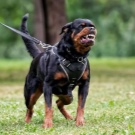
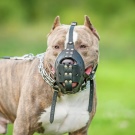
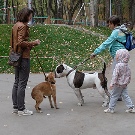
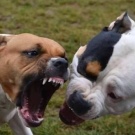
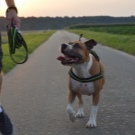
Suitable nicknames
A correctly selected nickname can not only properly raise a dog, but, as some breeders are convinced, endow it with certain mental and physical characteristics. As a rule, owners of fighting dogs are based on the mental and power qualities of their pets when choosing a name. Below is a list of the most successful names of fighting dogs, depending on different associations with strength, power and thoroughbred.
- Associations with the destructive power of nature. For boys: Buran, Thunder, City, Tornado, Hurricane, Typhoon, Volcano, Meteor. For girls: Blizzard, Tsunami, Avalanche, Tornado, Thunderstorm, Cloud.
- Associations with great historical figures. For boys: Caesar, Adolf, Quentin, Oscar, Newton. For girls: Margot, Monroe.
- Associations with mythical personalities. For boys: Zeus, Apollo, Ares, Adam, Achilles. For girls: Venus, Aurora, Aphrodite, Triad, Athena.
- Associations of noble birth. For boys: Lord, Prince, King, Sir. For girls: Lady, Madonna, Miss, Lady, Donna.
- Associations with excellence and excellence. For boys: Absolute, Diamond, Ideal, Diamond, Trump.
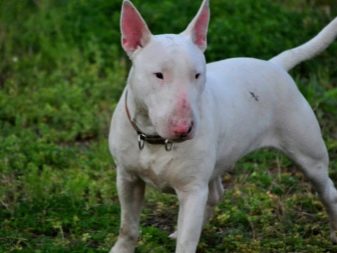
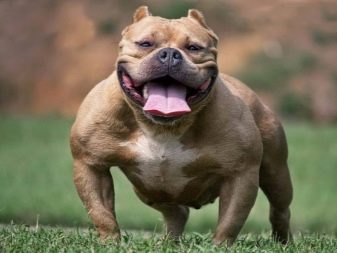
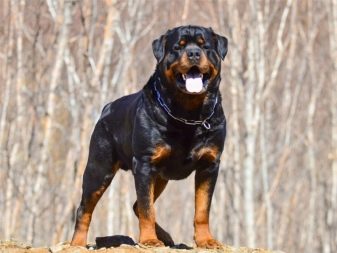
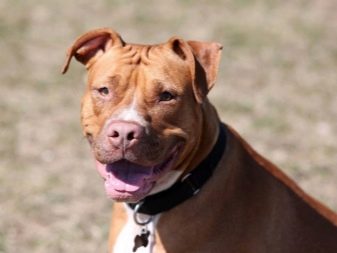
Tips
In fact, there are only 2 serious issues in the maintenance and upbringing of these animals. The first point is to control the natural aggression and thirst for fights in these dogs. This problem can only be fought through constant training and contact with the dog. Physical activity exhausts the body of these pets, which muffles the natural urge to fight and riot.
The second point is the proper maintenance of fighting dogs and a balanced diet. Not only health, but also the mood, cheerfulness of the dog depends on the fullness of the diet, the abundance of vitamins and the balance of elements in food. Experienced breeders came to the conclusion that a large amount of aggression in fighting dogs appears from dissatisfaction in one of the areas of a pet's life: from a lack of communication with the owner or from irregular and malnutritional meals.
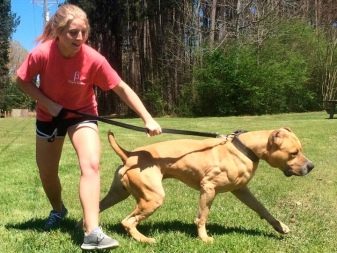

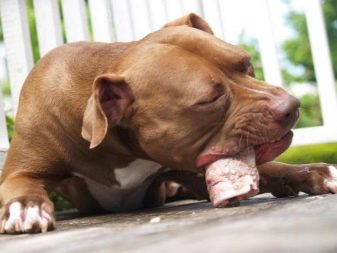
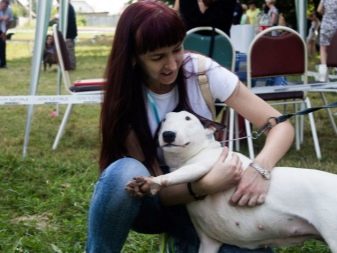
In all other respects, fighting dogs are absolutely ordinary pets that need kindness, affection and constant attention. Do not forget that the appearance of these dogs does not make them bloodthirsty killers and ferocious animals - it all depends on you and on the quality of the upbringing you gave the dog.
About what you can not do when keeping a fighting dog, see the next video.
